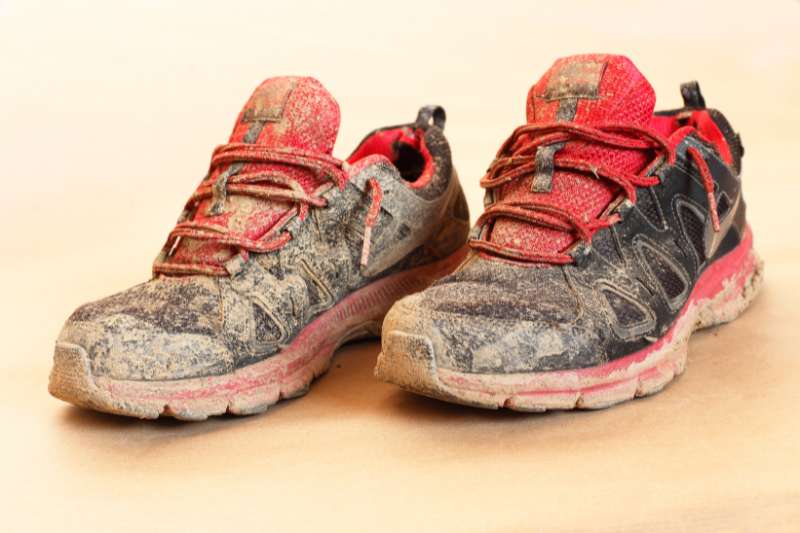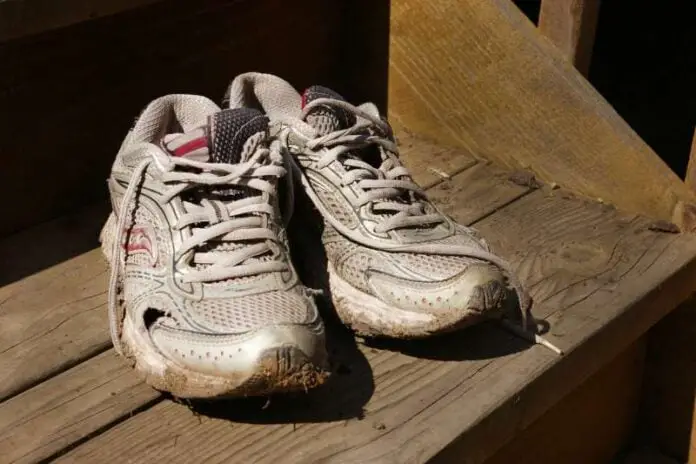Duct tape running shoes are a makeshift solution for footwear emergencies. They are not recommended for regular use due to lack of support.
Duct tape running shoes, the all-purpose adhesive known for its strength and versatility, is sometimes used in a pinch to repair or even create running shoes. This approach is typically born from necessity, such as when a runner encounters a shoe malfunction mid-run or when an athlete must improvise with available materials.
While crafting running shoes from duct tape can be a fun and creative effort, it is important to note that they are not suitable for long-term wear. Traditional running shoes offer critical support, cushioning, and protection designed specifically for the biomechanics of running. Using duct tape running shoes can lead to insufficient foot support and may increase the risk of injury. This unusual shoe solution underscores the ingenuity of runners but also highlights the importance of proper footwear for athletic performance and injury prevention.

Duct Tape Running Shoes: A DIY Revolution
Duct tape running shoes symbolize a unique DIY trend. Athletes and hobbyists are beginning to follow this innovative solution. These homemade shoes offer personalization and cost-effectiveness. Users appreciate the ease of repair and customization.
Choosing duct tape means selecting durability and versatility. It sticks well and can withstand rough terrains. Many find the material’s flexibility allows for a better fit. Duct tape’s wide color range lets runners express their style. This material proves useful for quick fixes on traditional running shoes too.
Materials And Tools Needed
Selecting the right duct tape is crucial for your homemade shoes. Choose a heavy-duty, high-quality duct tape. It must withstand wear and tear. Look for tapes with strong adhesive qualities. Bright colors or patterns can add a fun twist.
The essential tools for crafting shoes include:
- Scissors or a craft knife for cutting tape
- A measuring tape to measure your feet and tape lengths
- Shoe lasts or old shoes to use as a base form
- A marker for marking cutting lines
- Waxed paper to prevent sticking during crafting
Designing Your Duct Tape Shoes
Designing your own duct tape shoes starts with a creative blueprint. Grab paper and pencil, and sketch the outline of your desired shoe shape. Think about the size and foot contour to ensure a good fit. Remember to leave extra space for comfort!
Once the basic shape is on paper, it’s time to add personal flair. Choose colors and patterns of duct tape that reflect your style. Cut strips to create designs like stripes or shapes. Layering different colors can add unique effects.
For a snug fit, measure your foot’s width and length. Then, apply the duct tape accordingly. Use softer materials like foam for the insole, providing cushion and support. By customizing, you blend comfort with your personal touch!
Step-by-step Construction Guide
Preparing Your Insole: Start by cutting a foam pad to fit your foot size. Use a marker to outline your foot on the foam. Cut the foam with scissors for precision.
Assembling the Upper Part: Choose a durable duct tape. Wrap the tape tightly around your foot, ensuring it overlaps for extra strength. Leave holes for breathing and flexibility.
Finishing Touches for Durability: Reinforce the sole and sides with additional layers of tape. Check all edges are smooth and secure to avoid peeling. This makes your shoe last longer.
Tips For The Perfect Fit
Measuring your feet with precision is the first step. Use a ruler or a tape measure. Stand on a piece of paper. Trace around your foot gently. Measure the length and width. Write these numbers down.
For optimal support, ensure the duct tape is firm. It should not squeeze your toes. The tape must wrap snugly around your heel. Your arch should feel comfortable. Adjust the tape as needed. Comfort and support are key.
Pros And Cons Of Duct Tape Shoes
Duct tape shoes offer a unique blend of creativity and resourcefulness. Comfort levels might vary with personal preference. Some find the custom fit comfortable, while others may experience discomfort. Practicality shines in scenarios requiring a quick fix. Yet, these shoes might not be the best choice for daily wear. Over time, the adhesive can lose its stickiness, leading to frequent repairs.
Longevity is not a strong suit for duct tape shoes. They may deteriorate faster than traditional footwear. Maintenance could involve regular reapplication of tape. This might be seen as a fun activity or a tedious chore. The durability of the shoes is limited by the quality of the tape and the conditions they’re exposed to.
Real-life Stories And Testimonials
Many runners have found success using duct tape to fix or enhance their shoes. One runner shared how duct tape prevented her shoes from falling apart during a marathon. Another runner used duct tape to increase grip on slippery surfaces, ensuring a safer run in wet conditions.
Creative solutions abound among duct tape users. Some have crafted custom patterns on their shoes for personal flair or visibility during night runs. Others have used layers of duct tape to cushion soles, providing extra comfort and endurance on long runs.
Frequently Asked Questions
Why Do People Put Duct Tape On Shoes?
People use duct tape on shoes to repair tears, cover holes, or secure loose soles. It serves as a temporary fix to extend the footwear’s usability.
Why Do Cross Country Runners Tape Their Shoes?
Cross country runners tape their shoes to secure them, preventing them from coming off in muddy or rough terrain. This ensures a stable and uninterrupted race.
Can Duct Tape Fix Shoes?
Yes, duct tape can temporarily fix shoes by covering holes or securing separated soles until a permanent repair can be made.
How Do You Duct Tape Shoes?
Clean the shoe surface and cut a strip of duct tape. Position the tape over the damaged area and press firmly. Ensure edges are smooth and secure. Add more layers for strength if needed. Avoid covering flexible parts to maintain comfort.
Conclusion
Duct tape running shoes are not just a quirky DIY project but a testament to creativity and resourcefulness. Perfect for casual runners and craft users alike, they offer a unique combination of comfort and personal style.
Why not give this budget-friendly option a try on your next run?


